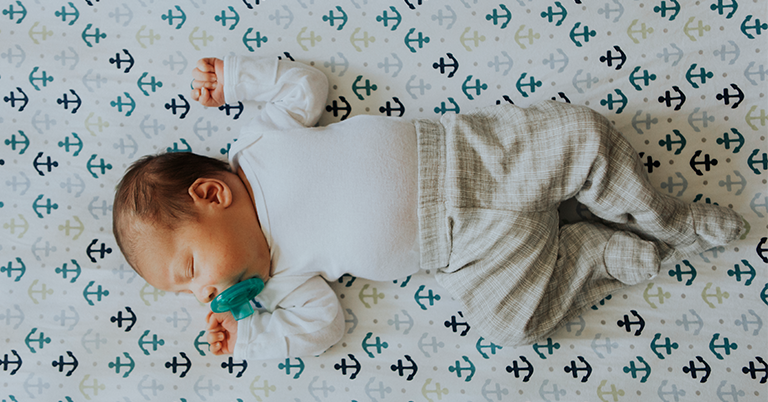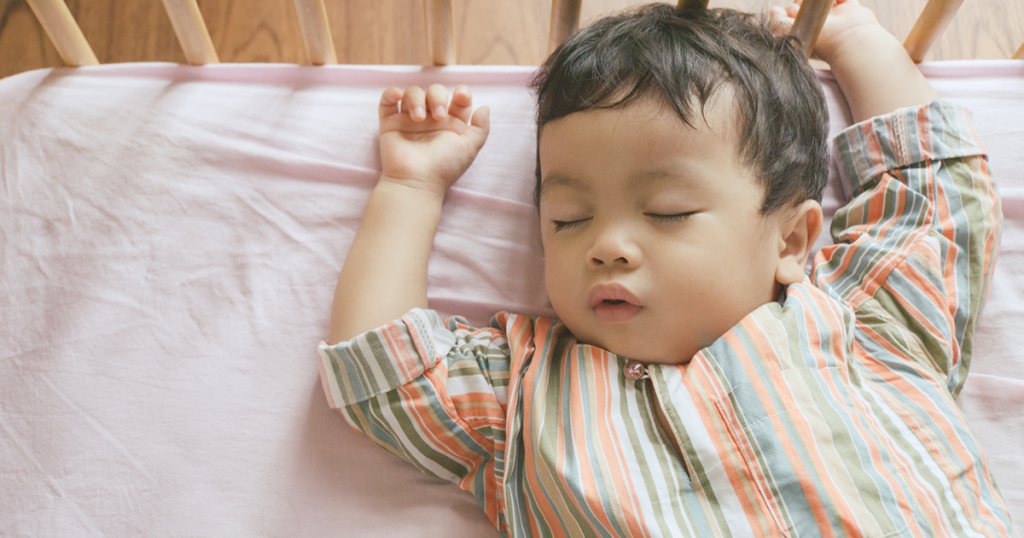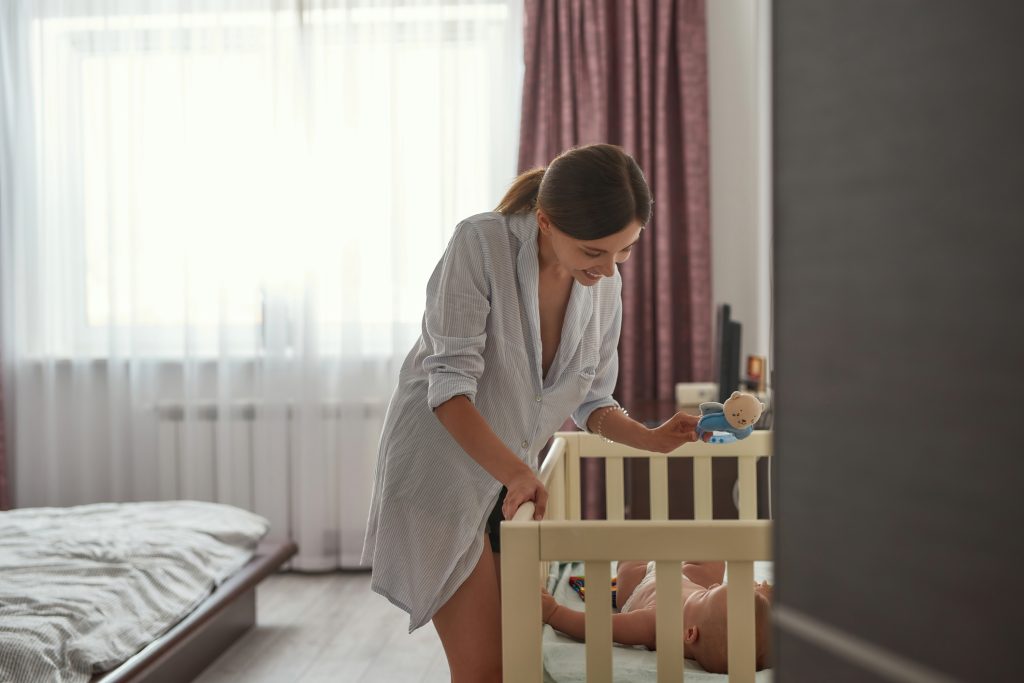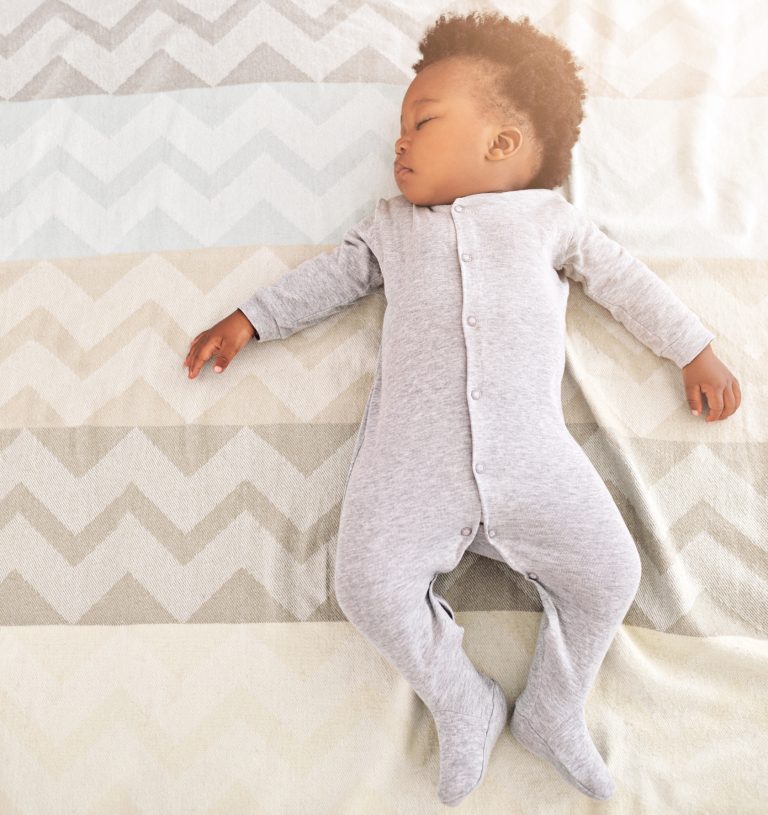
As a new parent, keeping your baby safe and sound is your top priority. And when it comes to sleep, creating a safe sleep environment for your little one is crucial. One thing you don’t want to overlook is the safety of their crib. It’s easy to get caught up in the stress of it all, but don’t worry! We’ve got you covered with tips and tricks to ensure your baby is snoozing safely. So let’s start with the basics: crib safety.
In 2011, the U.S. Consumer Product Safety Commission (CPSC) implemented new and stringent safety regulation for all cribs made and sold in the U.S. To guarantee your little one’s security follow these five important crib safety guidelines when choosing the right crib for your baby.
A crib with no drop-side rail
Concerned about the safety of infants, the CPSC has banned the sale of drop-side rails for cribs. Through extended use, the drop-side hardware on cribs becomes prone to breaking or deforming. This can cause the drop-side rail to detach from the crib and leave a gap for babies to roll over and get stuck in. This means that the side rails on your baby’s crib shouldn’t be able to move. You should avoid buying or accepting a used crib with a drop-side rail, as they can pose a risk to your baby’s safety. Learn more about drop-side rail hazards on the CPSC website.

Safe distance between crib slats.
According to CPSC crib safety standards, the distance between slats must be no more than 2-3/8 inches (6 centimeters) to protect infants from falling out and prevent the baby’s head from getting trapped between the slats.
The firmest crib mattress you can find.
To make sure your baby is sleeping in a safe crib, check the firmness of their crib mattress by pressing down at all angles. Make sure the crib mattress holds firm and springs back in place quickly. Don’t just take the manufacturer’s word for it—test it yourself! Firm mattress support is extremely important because soft mattresses may play a role in sudden infant death syndrome (SIDS).
A crib mattress that fits snugly in the crib.
Keep your baby crib safe by making sure it has a tight-fitting mattress. If you can fit two fingers between the mattress and the sides, the mattress is too loose. The crib mattress should fit firmly in the frame without any space between it and the sides to prevent babies from getting their body, arms or legs trapped in the gaps.
When buying bedding pads for your baby’s crib, make sure it fits snugly. Don’t buy one that is too big! Loose bedding can trap your baby in a dangerous situation and increase the risk of SIDS.
To prevent any risk of suffocation, remove all plastic packaging from the mattress before using it in a crib. Packaging materials such as plastic bags and wrapping can get stuck around the baby’s face, potentially leading to a serious accident.

Corner posts that are the right height.
Crib safety standards require that the corner posts of a crib should either be flush with the top of the headboard and footboard or be over 16 inches (41 centimeters) tall. Crib corner posts that are in between these heights can make it so that clothing is more likely to get caught in them and pose a risk of strangulation.
To make your newborn sleeps soundly, here are a few extra baby crib safety tips to safeguard your newborn’s crib:
- Follow the manufacturer’s instructions for assembling and disassembling the crib. Make sure all crib screws are securely fastened before use.
- Always place your baby on their back to sleep to avoid them rolling over and sleeping on their stomach. When newborns sleep on their stomach, this can lead to airflow blockage or suffocation.
- Make sure the crib has not been recalled by the manufacturer. The CPSC has a list of recalled cribs you can check.
- Conduct nightly baby crib safety checks. Check all screws and hardware on your baby’s crib regularly and tighten them if necessary. Replace missing or broken hardware as soon as possible.
- Don’t place bumper pads, soft bedding or blankets, fluffy comforters or pillows, soft toys or pillow-like stuffed toys in your baby’s crib. Any of these items could cause your baby to suffocate.
- Remove mobiles from your baby’s sleep environment when your baby starts to push up on his or her hands and knees or when your baby turns 5 months old—whichever comes first.
- Do not place a crib near a window or drapes. Your baby’s body could fall or become entangled in window blind and drape cords.
- Remove bibs and necklaces from your baby’s neck before putting your baby in the crib to avoid them getting strangled while sleeping.
- Make sure your baby’s clothing and sheets are flame-retardant.

Establish safe sleeping practices for a safe sleep space for your baby
Follow these crib safety tips and you can be sure you’re doing all you can to protect your baby while they sleep. With a few simple steps and some extra effort, you can be sure your baby will have the safest sleeping environment possible.
As a new parent, ensuring your baby’s safety during their sleep is of utmost importance. By staying up-to-date with the latest crib safety standards and conducting regular safety checks, you can rest assured that your baby is well-protected. Some vital tips to keep in mind include avoiding cribs with drop-side rails, maintaining an appropriate distance between the slats, and ensuring a firm and snug-fitting mattress. The ultimate goal is to prevent any harm or injuries to your precious bundle of joy. With these guidelines, you can confidently provide a comfortable and safe sleeping environment for your new baby.
If you’re a new parent, ask your doctor or the baby’s doctor for more information about how to keep your baby safe when they sleep. If you haven’t found a doctor for your baby yet, find a pediatrician through the Children’s Minnesota and Allina Health tools below.
Baby crib safety & baby crib safety standards frequently asked questions (FAQs)
What does crib safety mean?
Crib safety refers to ensuring that the crib is designed and used in a way that reduces the risk of injury or harm to the baby.
What are the safety standards for cribs?
The safety requirements for cribs include having slats no more than 2 3/8 inches apart, having no drop sides, and having a firm, snug-fitting mattress.
How do I know if a crib is safe?
You can determine if a crib is safe by checking if it meets the safety standards set by the CPSC, ensuring the slats are the correct distance apart, and checking for any broken or missing parts.
How often should I check the crib for safety hazards?
You should check the crib for safety hazards regularly, ideally every month or after any adjustments or modifications have been made.
What are four things that should not be in a crib?
Four things that should not be in a crib are loose bedding, plush toys, bumper pads, and any objects with cords or strings.
What is the best crib for a baby?
The best crib for a baby is one that meets safety standards, has a firm mattress, snug fitting mattress pad, and is appropriately sized for the baby.
What are the risks of using an old or secondhand crib?
The risks of using an old or secondhand crib include safety hazards such as slats that are too far apart, missing or broken parts, and a lack of safety features that newer cribs have.
Can I use a drop-side crib?
No, it is not safe to use a drop-side crib as they have been banned due to safety concerns.
How should I position my baby in the crib?
The baby should be placed on their back in the crib, with their feet touching the footboard. Sleeping on the stomach or side increases the risk of SIDS.
How can I ensure that my baby’s head does not get stuck in the crib bars?
To prevent the baby’s head from getting stuck in the crib bars, the slats should be no more than 2 3/8 inches apart.